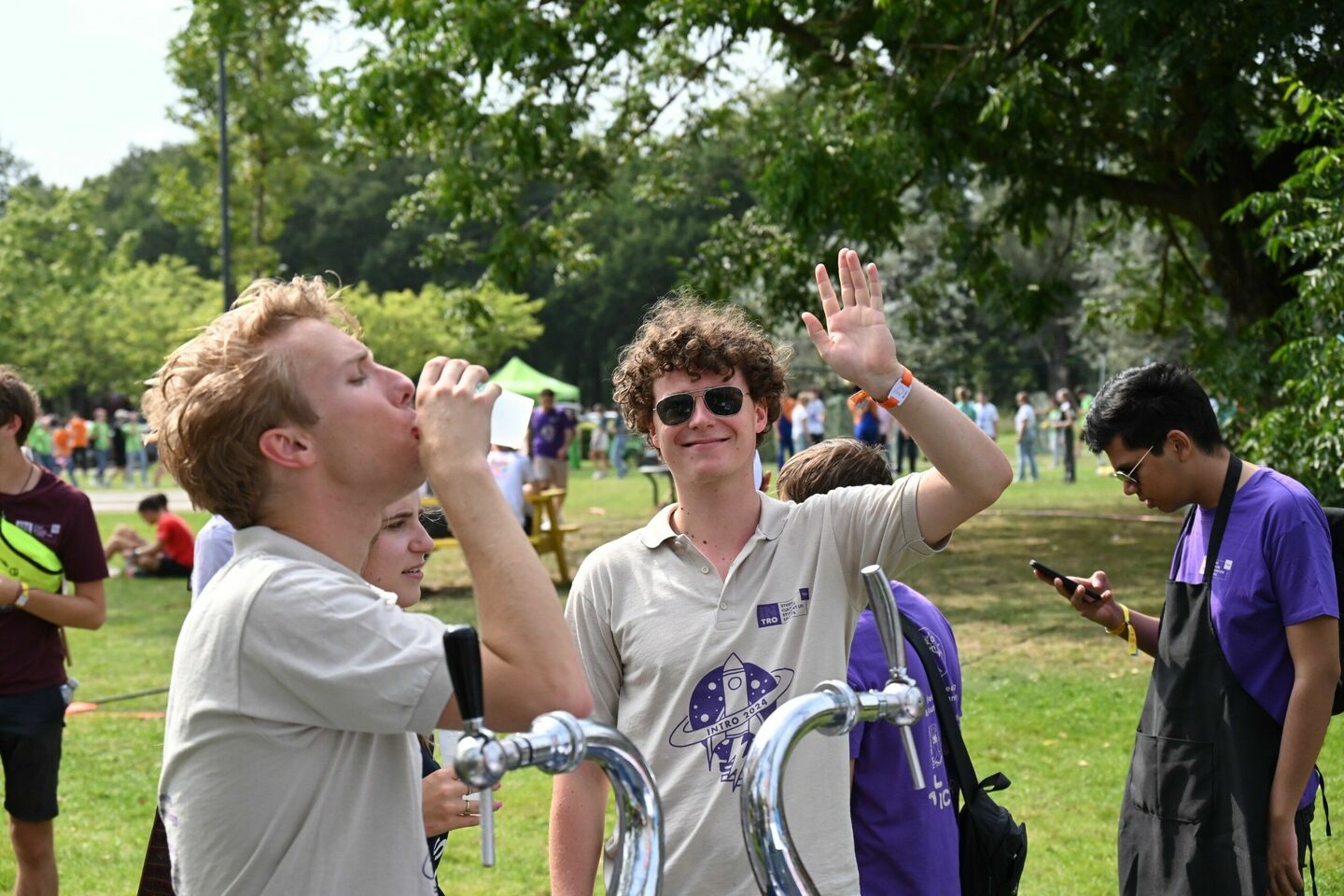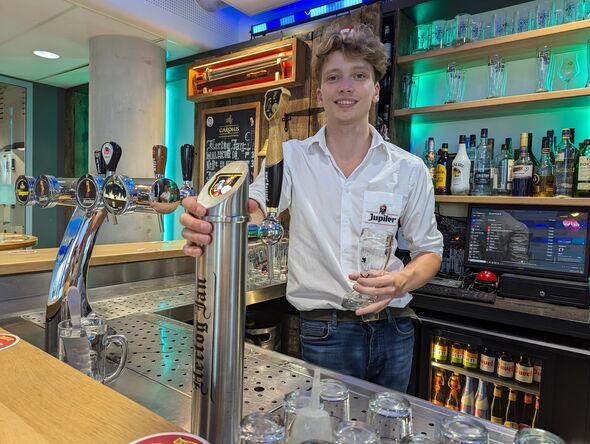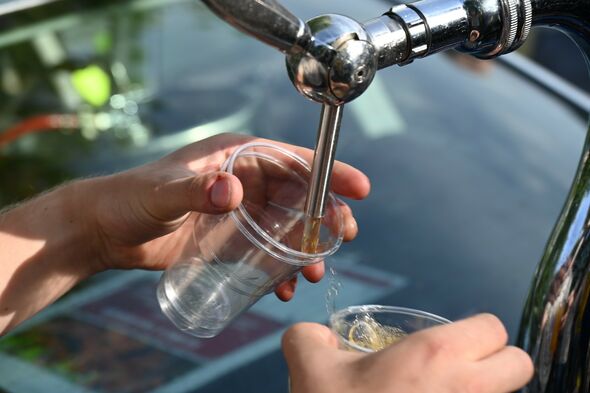
How do you get beer to the perfect temperature?
Cursor explains
Just to be clear: this explanation isn’t for use in your home or garden. Except if you’re throwing a party there, of course. Mike Zanderink knows everything there is to know about cooling kegs of beer thanks to his experience as a bartender at study association Thor in Het Walhalla. And another thing: Electrical Engineering students can also keep drinks cool inside a car.
“An ice-cold wheat beer is the best thing to have on a really hot day,” says Zanderink. And he would like everyone to experience this. “This means the beer has to leave the tap at 1 degree Celsius. By the time you drink it – factoring in that you first walk over to wherever you’re planning to do that – it’ll be perfect. On a summer’s day, it won’t take long at all for it to reach a temperature of 5 to 7 degrees.”
At anniversary parties and Thor’s constitution drinks, large quantities of beer are consumed at Het Walhalla. Zanderink’s best guess is about eight kegs in a few hours time. “It requires some calculations to get all of this cooled. Our supply of kegs for these events is on the rooftop terrace, sometimes right in the sun. When it’s twenty-five degrees outside, we want to bring it down to 1 in as short a time as possible.”
The beer flows to the tap installation through a pipe of around ten meters. It first hits the cooling spiral before it gets to the tap. Carbon dioxide is blown into the keg from a cylinder, with a manometer regulating the pressure. At Het Walhalla, they use a fairly high pressure for parties: 2.3 bars (which, incidentally, is 1.8 on quiet days). Because of the pressure, the beer looks for a way out, finding it – after traveling through a coiled pipe – at the tap that the bartender is operating. In the meantime, the carbon dioxide that stays behind in the cylinder gets more space. Expanding gas cools down. “One time, we saw ice forming on the cylinder, that’s how cold it was.” The spiral through which the beer travels is in a water container around that cold cylinder.
Bit of thermodynamics
What’s important to know, is how much time it takes to get beer from 25 degrees to 1 degree. “And this is where a bit of thermodynamics comes in,” Zanderink warns. “It’s an equation most people in high school will be familiar with, it’s textbook. The energy you need is the mass of whatever it is you want to chill, times a coefficient that depends on what it is you want to chill, times the temperature difference.” In our example, the variables are as follows: fifty kilos, beer, 24 degrees. The result of the equation is how many joules you require.
“But that energy is a given, as it’s the capacity of the cooling box we borrow from the brewery, and that’s 1 kW. That’s 1,000 joules per second. We can calculate how much time it takes to sufficiently chill a keg using 1 kW. If we see it’s taking longer than we want, more than eight minutes, say, we put in a second cooling spiral from the mobile bar.”
One of the members of the Het Walhalla committee (WaCo) worked together with Matlab to create a script that can calculate every situation, but the back of a coaster will also do the trick.
50 liters in 8 minutes
“During last year’s Intro, I opened up shop at 4:30 pm, when we could start serving alcohol. On the right, there was a row of thirsty students. From the left, I got handed cups. We had upped the pressure a little bit and within eight minutes, we emptied the large keg. And all beers were cold.”
Spiral cooling is used by several bars (including student ones). The alternative is having a cold keg right under the tap. An advantage over spiral cooling is that less beer is lost in the progress. “Our spiral is constantly filled with a liter and a half of beer. When you stop serving for the day and turn off the cooler, you have to throw that beer out the next day.” Or you serve it out during the last round… It’s a bit wasteful to use spiral cooling for kegs that aren’t emptied in one shift anyway.
Specialty beers are in twenty-liter kegs, which are cooled to five or six degrees at Het Walhalla and are right underneath the tap. Hertog Jan beer is tapped from fifty-liter kegs and is cooled with the spiral. Last April, a five-year contract was concluded with the brewery to serve Hertog Jan, in case you were wondering.
Tap car
Thor is known for its tap car. A sedan is converted to a mobile bar on wheels by the Electrical Engineering students in the tap car committee (TACo). Some people call it a rolling offense, “but it always passes inspection.”
Two very noticeable taps are mounted onto the trunk lid. One’s for water or lemonade, the other one’s for beer. The kegs are in the back seat, next to the spiral cooler and the carbon dioxide cylinder with the manometer. The current Volkswagen Passat fits six kegs, provided the spare wheel is taken out. “When we’re on public roads, the taps have to come off, the authorities said.”
Thor already had its first tap car as far back as the 1980s. As soon as such an old rust bucket breaks down, Thor starts looking for a new second-hand sedan. Zanderink hopes the current association car will last for five years, as it’s increasingly difficult to find an affordable old sedan. The previous one was a 500-euro Audi, but it only lasted for two years. The investment was a bit bigger this time. “We got an extra trunk lid from some wrecking yard, so we can change them out with or without the taps. You just need to clean it out a bit and there’s your association car.”
Cold beer in the woods
But even in a pimped-out car, the cooler needs power, which isn’t always available in the city or along a canal, the locations where you can typically spot the tap car. “As long as the engine is running, the dynamo is working,” says Zanderink. “And we put a box into this Volkswagen that converts 12 volts alternating current into 230 volts. This keeps the cooling installation running. As long as you’re driving, you’re cooling. And we also make sure there’s an ice buffer. This means that even when we’re in the woods, we can serve cold beer for up to an hour and a half.”






Discussion